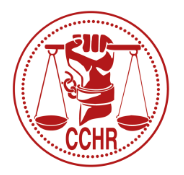
“One of the great errors of the 20th century was this: we accepted the spurious notion that
a wide range of life’s problems were in fact illnesses.”
These are the words of Dr. Phil Hickey, a retired psychologist. Dr. Hickey writes
articles for his own blog that point out the faults in the diagnosis of psychiatric disorders.
In life, we experience a wide range of feelings – grief, boredom, happiness, anger and
hopelessness, to name a few. These are all normal emotions that people feel
depending on the situations they are faced with each day.
After being given a heavy workload, you’re likely to feel stressed. When you can’t find
something to do, you may feel bored. When a loved one dies, you will probably
feel grief. When you’ve had a productive day full of accomplishments, you will
probably feel happy, and maybe even proud.
A recent article published in an Indian newspaper stated that, according to “mental
health experts,” 98% of people in India suffer from “lifestyle anxiety.” This
statement labels a huge percentage of people as having a mental disorder.
It is important to understand the difference between a medical disease and a
psychiatric disorder. In the medical field, scientific tests are used to prove
the existence of a medical condition. Blood tests, for example, can be used to
diagnose a disease. However, in the field of psychiatry, no such tests exist.
Psychiatric disorders are diagnosed based on a list of symptoms. These symptoms are simply voted on by the American Psychiatric Association, and the symptoms that win the vote are included in the Diagnostic Statistic Manual (DSM), the diagnostic textbook
for psychiatry.
“No biochemical, neurological, or genetic markers have been found for Attention
Deficit Disorder, Oppositional Defiant Disorder, Depression, Schizophrenia,
anxiety, compulsive alcohol and drug abuse, overeating, gambling or any other
so-called mental illness, disease, or disorder,” says Bruce Levine, Ph.D.
How does this unscientific diagnosis affect children? Children can feel content,
happy and joyous. They can also feel upset, bored or wild. These feelings are
part of normal childhood behavior, but can easily be misdiagnosed as mental
disorders. Until recently, giving kids a cocktail regimen of psychiatric drugs
was unheard of. Nowadays, it is practically the norm.
Take the example of Rebecca Riley. She was diagnosed with ADHD and Bipolar Disorder at the age of 2 ½ years old. She was prescribed three psychiatric medications: an
anti-hypertensive (Clonidine), an anti-seizure drug (Depakote), and an
antipsychotic (Seroquel). At the age of 4, she died of a prescription drug
overdose. All three drugs were found in her system when she died.
The diagnosis of psychiatric disorders is on the rise. Do a little digging for
yourself, and you’ll find that several mental disorders have a higher diagnosis
rate than ever before, even among young children.
Even though tests do not exist to diagnose mental illnesses, the diagnosis of Pediatric
Bipolar Disorder rose 4000% from 1994 to 2003. There is no proven test for ADHD
either, but according to the CDC, the diagnosis rates for ADHD increased 5.5%
per year between 2003 and 2007. That is over a 20% increase between those years
alone.
Dr. Michael Lesser, a psychiatrist, says, “It’s not like you can find a cell in a person
that shows that they have bipolar disorder. It’s not like they have a fever or
run a temperature. Like if they had a physical illness. This is a behavioral
definition only.”
When you were a child, did you ever feel bored in school? Did your youthful energy ever
get you into trouble? How can we be sure that these “mental health” symptoms
aren’t actually just symptoms of childhood?
“Perhaps worst of all, these diagnoses almost inevitably lead to the prescription of
psychiatric medication to you or your child. Psychiatric drugs are toxins to
the brain; they work by disabling the brain,” says psychiatrist Peter Breggin.
Psychiatrists claim that mental disorders come from a chemical imbalance in the brain. However, there are no tests to analyze the chemical status of a living person’s brain,
or to determine what a correct chemical balance looks like. The chemical
imbalance theory has never been proven true.
Meanwhile, many experts agree that diet and nutrition can play a role in behavior. For example, a diet loaded with sugar can make a child seem hyperactive and create symptoms
normally associated with ADHD. What American child’s diet isn’t full of sugar?
There is also the possibility that an undiagnosed physical problem exists, rather than a
mental one. You can read more about the physical illness factor here: https://cchrflorida.org/physicalormental.html.
Life is comprised of sorrows and joys, good times and bad. Whether you’re talking about
adults or children, surely our lives were meant to be more than just a handful
of pills.
Free Baker Act Help - Call Us: 800-782-2878
info@cchrflorida.org


I simply desired to thank you very much yet again. I’m not certain what I might have made to happen without those ideas revealed by you over such subject. It seemed to be a very horrifying problem in my view, but being able to view the expert style you handled it made me to leap with contentment. I’m just thankful for your information and then hope you recognize what a great job that you are putting in educating the mediocre ones all through your websites. I’m certain you’ve never got to know all of us.